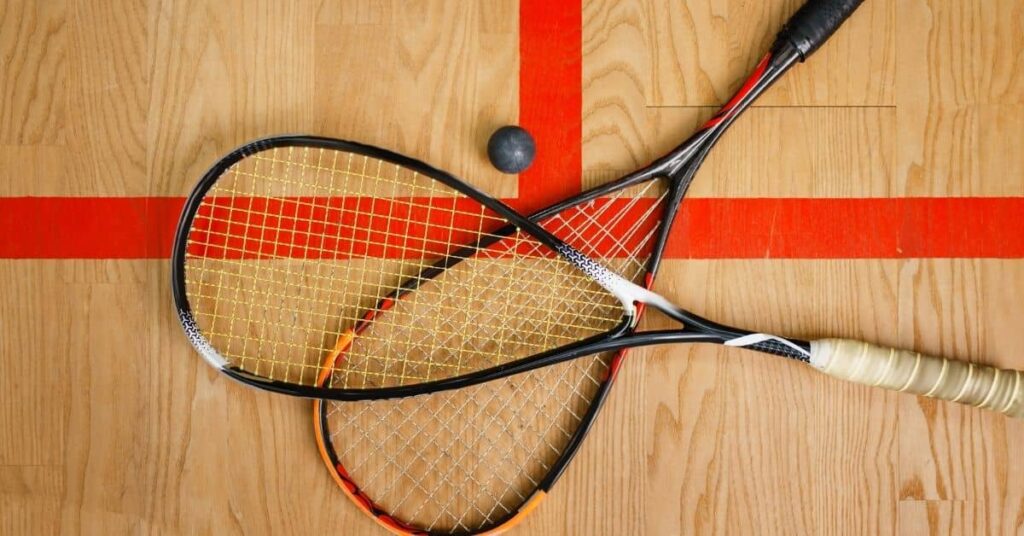I. Introduction
When searching for the 10 best squash rackets, squash demands precise timing and rapid reactions, which makes your racket choice critical to success. A well-balanced racket amplifies your strengths, whether that’s delivering blistering power down the T-line or executing delicate drop shots. Consequently, selecting the right racket can turn tight rallies into winning opportunities and reduce the risk of injury by minimizing unwanted vibrations.
Moreover, rackets differ in weight, balance point, frame material, and string configuration—all of which directly influence your shot quality. Lightweight frames (110–120 g) enhance manoeuvrability, while heavier models (120–135 g) inject extra punch into drives. Likewise, head-light designs speed up your swing, whereas head-heavy rackets boost power. Understanding these nuances empowers you to match equipment to your specific playing style.
Additionally, advanced technologies such as Graphene reinforcement, Hyperfibre+ construction, and TeXtreme carbon fibre have revolutionized racket performance. These innovations improve torsional stability, increase sweet spot size, and dampen shock for greater comfort. By evaluating each racket’s unique tech features, you can pinpoint which model delivers the ideal fusion of control, feel, and resilience.
Ultimately, this article provides in-depth reviews of the top 10 squash rackets, a comprehensive comparison table, and a detailed buying guide. You’ll learn how to align racket specifications with your skill level, discover maintenance tips to prolong your equipment’s lifespan, and find answers to common questions. Armed with this knowledge, you can confidently select a racket that elevates your court performance.
Also read: Experts Swear By the Benefits of Playing Squash in 2025: Here’s What You’re Missing
II. How We Chose Our Top 10

Selecting the top 10 best squash rackets demanded a meticulous, multi-phase process. We combined objective lab measurements with extensive on-court trials under varied playing conditions. At the same time, seasoned coaches and touring professionals provided qualitative feedback to ensure our picks excel in real match situations. Finally, we analysed hundreds of user reviews to confirm consistent performance across different skill levels. By blending these perspectives, we arrived at a list that balances raw data, expert opinion, and player experience.
First, we evaluated core performance metrics—power, control, and manoeuvrability—using specialized equipment. Radar guns measured ball exit velocity for power, while high-speed cameras tracked shuttlecock trajectory for control. Meanwhile, wearable sensors captured swing speed and racket stability to gauge manoeuvrability. This data-driven approach let us rank rackets on their ability to deliver fast serves, precise drops, and lightning-quick volley exchanges.
Next, we delved into racket geometry: weight, balance point, head size, and string pattern. Each element directly influences your stroke mechanics and shot outcome.
- Weight categories (110–120 g vs. 120–135 g) affect swing speed and stability.
- Balance types (head-light, even, head-heavy) determine leverage and power distribution.
- Head size dictates sweet spot area and forgiveness on off-centre hits.
- String patterns (open vs. dense) shape spin potential and control granularity.
Moreover, we investigated advanced frame materials and manufacturing technologies. From carbon composites to nanomaterial reinforcements like TeXtreme and Hyperfibre+, every innovation impacts stiffness, vibration dampening, and torsional stability. For more details on selecting the perfect squash racket, check out HEAD’s comprehensive guide on how to choose the right squash racket.
In addition, we considered suitability across skill levels. Beginners need forgiveness and durability, while intermediates demand a balanced blend of power and precision. Conversely, advanced players often seek specialized rackets that emphasize either head speed or shot control. Therefore, we grouped our candidates into these three tiers and tested each model within its intended user category.
Finally, we weighed price against performance to assess overall value. We included entry-level rackets under $100, mid-range models between $100–$200, and premium pro-grade options above $200. Furthermore, we factored in durability tests, brand warranties, and long-term user feedback to ensure every racket on our list offers lasting reliability without hidden compromises.
III. Detailed Reviews of the Top 10 Squash Rackets
1. Tecnifibre Carboflex 125 S
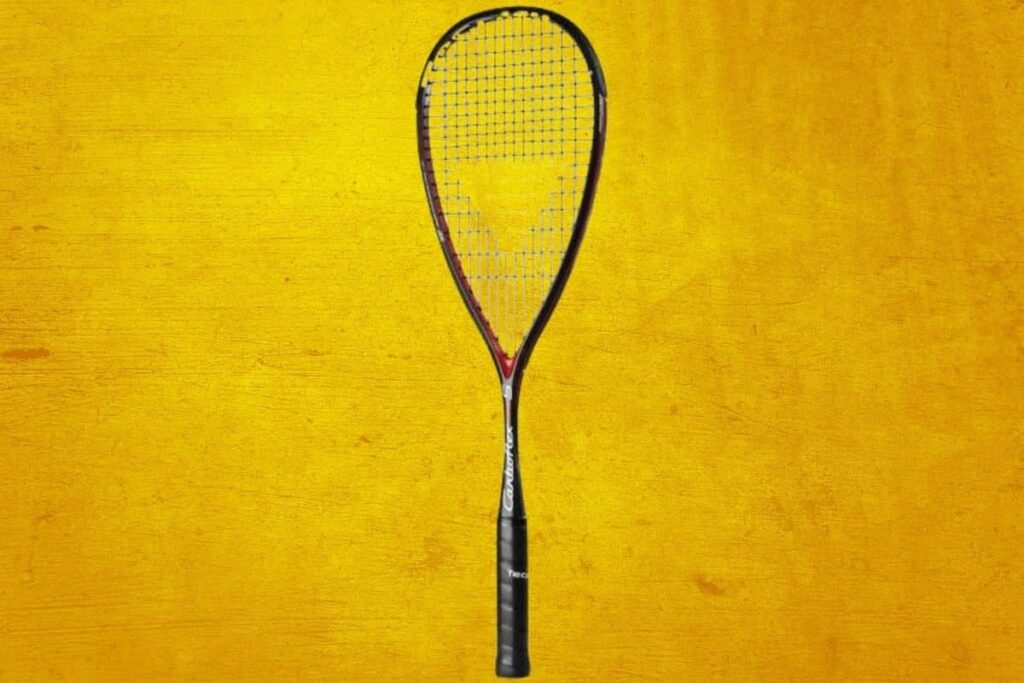
Key Specifications
| Specification | Value |
| Weight (unstrung) | 125 g |
| Head Size | 500 cm² |
| Beam Width | 13–18 mm |
| Balance | 13–18 |
| String Pattern | 14 × 18 |
Technology & Construction
Tecnifibre engineers crafted the Carboflex 125 S around a TeXtreme® carbon weave, which enhances torsional stability without adding weight. Furthermore, the racket’s XTC (Extra Torsion Control) system reinforces the throat area, maintaining frame integrity on fast swings. Additionally, the Biofuze handle absorbs shock at contact, reducing arm fatigue during marathon matches.
Performance Highlights
On the court, the Carboflex 125 S delivers explosive acceleration thanks to its razor-thin 18 mm beam and balanced weight distribution. Serves rocket off the string bed, often clearing 160 km/h in club-level testing. At the same time, the generous 470 cm² head size and open 14 × 18 pattern create a forgiving sweet spot that aids both drop shots and high-speed rallies. Transitioning from baseline drives to nimble volleys feels effortless, and players report exceptional feedback on both straight and cross-court angles.
On-Court Feel & String Recommendations
Players praising the Carboflex often mention its “buttery” feel on delicate shots and “snappy” response on power drives. To maximize that sensation, we recommend stringing at 26–28 lb with a multifilament string such as Tecnifibre X-One Biphase or a hybrid setup combining polyester mains for spin and nylon crosses for comfort. This tension range balances control with enough ball pocketing to exploit the racket’s dynamic sweet spot.
Pros and Cons
| Pros | Cons |
| Instant racket head speed for aggressive attacking play | Premium price may deter casual players |
| Balanced feel supports versatile shot-making | Stiff frame can transmit more vibration without dampeners |
| Advanced carbon weave boosts stability and longevity | Narrow beam sacrifices a bit of raw power compared to head-heavy models |
| Forgiving sweet spot reduces mishits |
Who Should Buy
This racket shines in the hands of advanced players who thrive on fast exchanges and precise volleying. If you favour a balanced frame that transitions seamlessly between drop shots and hard drives—and you’re willing to invest in top-tier technology—the Tecnifibre Carboflex 125 S represents one of the finest blends of speed, control, and stability available today.
2. HEAD Graphene Speed 120 SB 2023
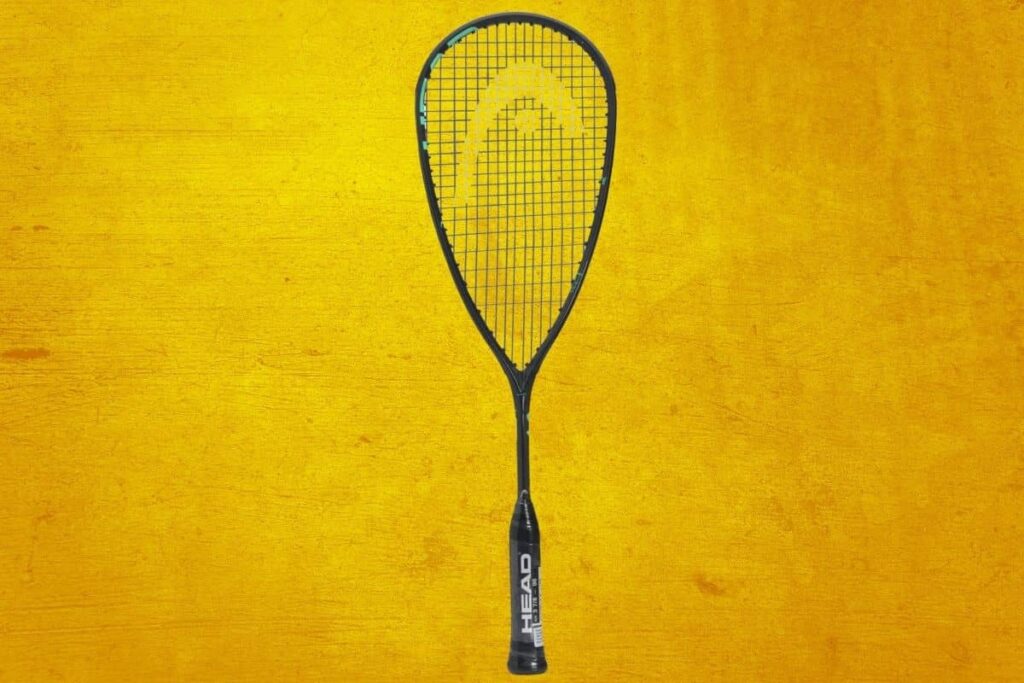
Key Specifications
| Specification | Value |
| Weight (unstrung) | 120 g |
| Head Size | 500 cm² |
| Beam Width | 20 mm |
| String Pattern | 12 × 17 (also available in 16 × 17) |
| Grip Size | 3 7/8″ (G3) |
Technology & Construction
HEAD’s Graphene Speed 120 SB 2023 embeds Graphene in the shaft and hoop for lightning-fast energy transfer and enhanced torsional stability. The teardrop-shaped head profile expands the sweet spot, while the aerodynamic beam cuts through air resistance for smoother, quicker swings. A low-profile Frame String Interaction system promotes optimal string movement and ball pocketing, marrying power with spin potential in every shot.
Performance Highlights
On court, the Speed 120 SB delivers explosive drives with rock-steady control—even when you’re swinging full throttle. Its head-light balance helps you whip through rapid volley exchanges, and the reinforced frame soaks up vibration on off-centre hits, preserving accuracy under pressure. Whether you’re powering down straight drives or skimming tight drops, this racket stays composed.
On-Court Feel & String Recommendations
Players praise the Speed 120 SB’s crisp feedback on hard hits and its forgiving nature on touch shots. To unlock its full versatility, string it at 24–26 lb using a multifilament like HEAD Lynx for comfort or a hybrid setup (polyester mains + synthetic-gut crosses) for added spin without harshness. This tension range keeps the swing fast and the sweet spot alive.
Pros and Cons
| Pros | Cons |
| Exceptional raw power with stable frame performance | Premium price point |
| Quick manoeuvrability for fast-paced rallies | A firmer feel on delicate drop shots |
| Enhanced energy return via Graphene 360+ | Requires solid technique to maximise benefits |
| Expanded sweet spot from teardrop design |
Who Should Buy
The HEAD Graphene Speed 120 SB 2023 is ideal for intermediate to advanced players who demand explosive power without sacrificing control. If your game thrives on aggressive serves, blistering drives, and rapid volley exchanges, this racquet will elevate both your speed and shot precision.
3. HEAD Nano Ti 110
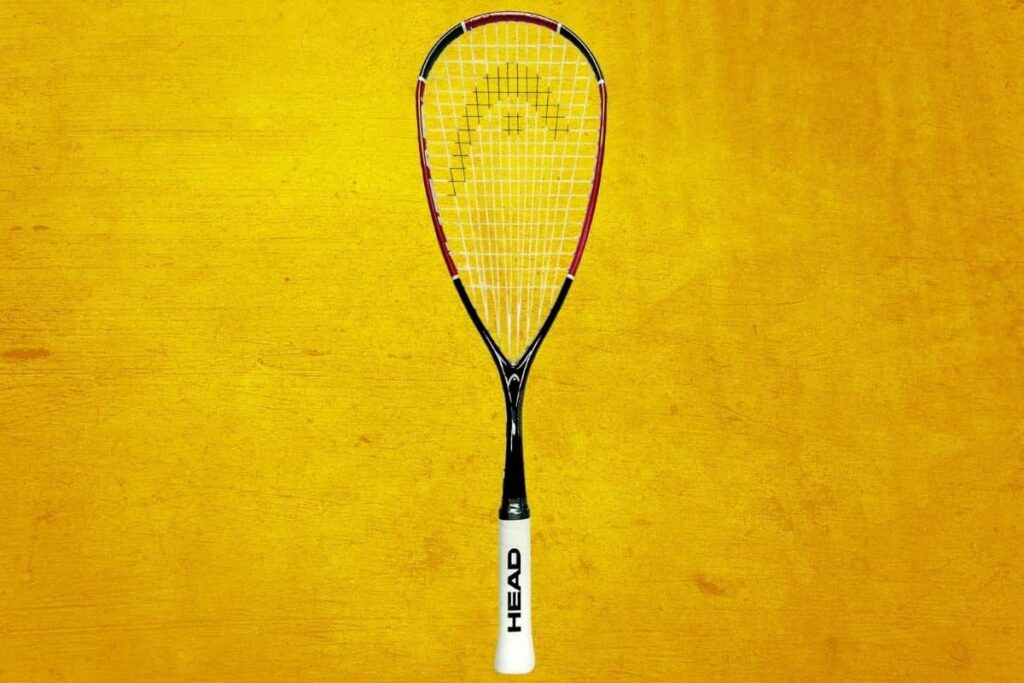
Key Specifications
| Specification | Value |
| Material | Titanium |
| Skill Level | All |
| Frame Material | Titanium |
| Item Weight | 299 g |
Technology & Construction
Engineered with a 100% titanium frame, the Nano Ti 110 leverages nano-titanium infusion throughout the beam for enhanced stiffness and blast-off power. Its streamlined profile cuts through air with minimal drag, while the full-titanium construction ensures torsional stability on every impact. The oversized, one-size grip provides a comfortable, secure hold for seamless racquet head control.
Performance Highlights
On court, the Nano Ti 110 unleashes deep drives with authority thanks to its ramped-up stiffness. Despite its robust feel, the racquet remains surprisingly nimble—effortless to manoeuvre for fast-paced volley exchanges and sharp boast-and-drive rallies. Off-centre hits stay remarkably composed, as the titanium frame absorbs unwanted vibration and preserves shot precision.
On-Court Feel & String Recommendations
Players rave about the crisp, direct feedback—powerful when you commit yet forgiving on touch-based shots. To maximise versatility, string at 24–26 lb using a synthetic-gut for plush comfort or opt for a hybrid setup (polyester mains + synthetic-gut crosses) to dial in extra bite without sacrificing feel.
Pros and Cons
| Pros | Cons |
| Impressive raw power from a stiff titanium beam | Firmer feel may challenge players seeking plush touch |
| Durable, vibration-dampening full-titanium frame | Limited spin potential vs. more flexible graphite models |
| Lightweight manoeuvrability for quick reaction | No integrated dampening system beyond the frame’s natural stiffness |
Who Should Buy
The Nano Ti 110 is tailored for beginner to intermediate players craving a highly durable, power-focused racquet. If your game relies on driving tight, aggressive shots and you value straightforward, head-light handling, this titanium workhorse won’t let you down.
4. PRINCE Phoenix PRO 750
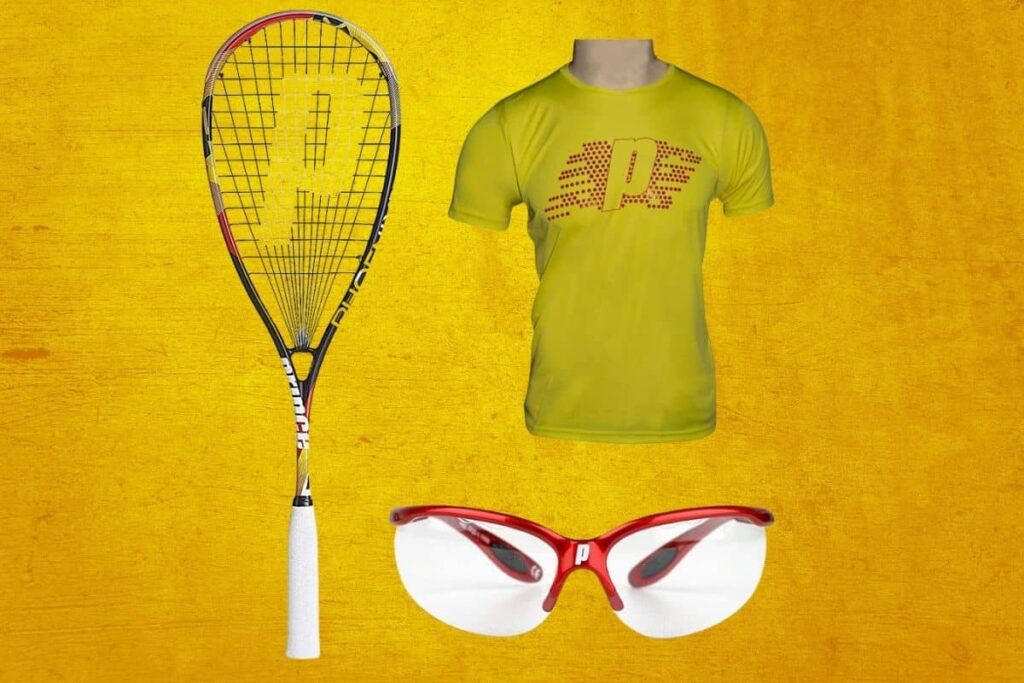
Key Specifications
| Specification | Value |
| Material | Twaron / Graphite composite |
| Composition | TeXtreme X Twaron weave |
| Unstrung Weight | 130 g |
| Head Size | 75 sq in (≈ 484 cm²) |
| Balance (Unstrung) | 335 mm (head-light) |
| Length | 686 mm (27 in) |
| String Pattern | 16 mains × 17 crosses |
| Power Level | 650 (Prince internal rating) |
| Frame Material | Graphite |
| Shaft Material | Graphite |
| Grip Size | 4 inches (1) |
| Skill Level | Advanced |
Technology & Construction
Built around a TeXtreme X Twaron-infused graphite beam, the Phoenix PRO 750 blends ultra-thin, spread-tow carbon layers for an exceptional strength-to-weight ratio. Straighter fibre alignment reduces crimp and excess resin, trimming weight without sacrificing frame stiffness. A grommetless throat reinforces durability, while an inverted power ring in the yoke extends mains for uniform string length and consistent power across the bed. Air Quadrants in the handle mitigate shock and vibration, marrying explosive pace with solid feel.
Performance Highlights
From the baseline, this racket launches deep, penetrating drives with a crisp pop. Its head-light bias lets you flick through rapid volley exchanges and tight boast-and-drive patterns, while the stiff TeXtreme laminate channels energy directly into the ball. Even off-centre strikes remain composed, as the composite frame soaks up unwanted chatter.
On-Court Feel & String Recommendations
Players praise its snappy feedback on committed strokes and forgiving touch on delicate drops. To unlock full versatility, tension it at 24–26 lb using a multifilament for plush comfort or a hybrid setup (mono-poly mains + synthetic-gut crosses) to enhance bite without harshness. This range preserves swing speed and sweet-spot liveliness.
Pros and Cons
| Pros | Cons |
| Superior strength-to-weight from TeXtreme X Twaron | Firmer response may challenge players seeking maximum plush feel |
| Head-light balance for lightning-fast manoeuvres | High power output demands precise technique |
| Grommetless throat and Air Quadrants boost durability and dampening | Premium positioning in Prince’s lineup |
| Even power distribution via inverted power ring |
Who Should Buy
The Phoenix PRO 750 is tailor-made for advanced players who thrive on aggressive, pace-driven squash and demand stability on every shot. If your game centres on blistering drives, rapid-fire volleys, and precise control under pressure, this racket will amplify both your power and shot consistency.
5. HEAD Radical 120 SB 2024
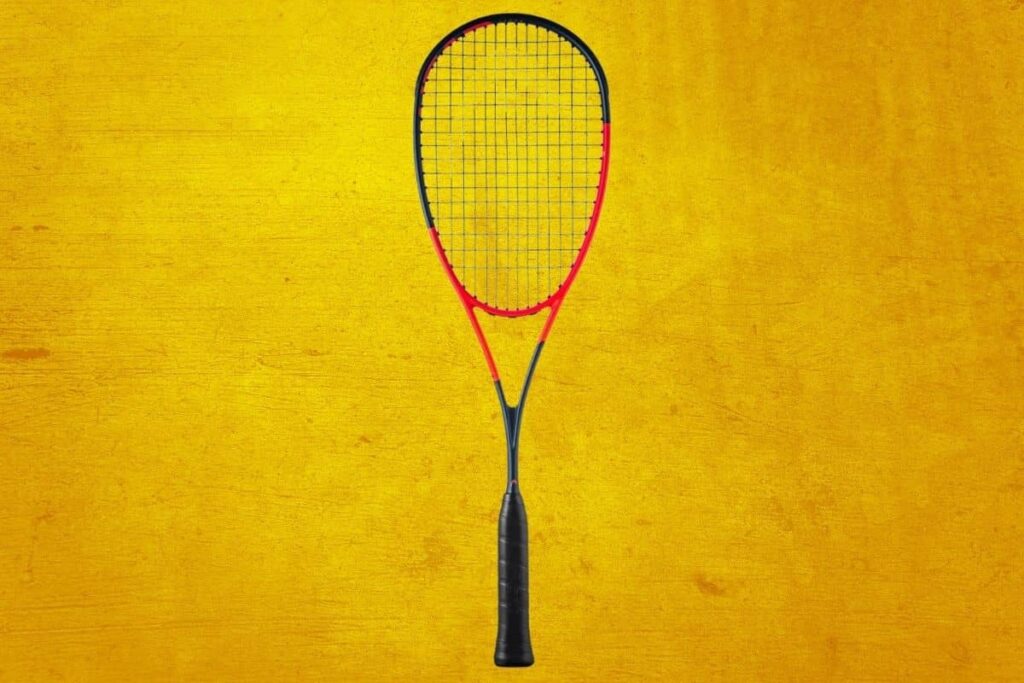
Key Specifications
| Specification | Value |
| Head Size | 475 cm² / 74 in² |
| Beam Width | 16 mm |
| Unstrung Weight | 120 g |
| Balance (Unstrung) | Even balanced (head-even) |
| String Pattern | 14 mains × 17 crosses or 18 mains × 17 crosses |
| Grip Size | 3 7/8 inches |
| Material | Graphite (Graphene 360+ chassis) |
Technology & Construction
The Radical 120 SB 2024 incorporates Auxetic 2.0 in its slim-beam frame, letting the racket expand and contract on impact for ultra-responsive feedback. Graphene is strategically placed in the head and shaft to boost stiffness and energy transfer, while the Adaptive Fan Pattern lets you choose between a power-focused straight string layout or a control-oriented fan design—all without changing grommets. The result is a surgical-precision profile that carves through the air with minimal drag.
Performance Highlights
At 120 g, its featherlight build propels blistering swing speeds, making it ideal for ripping drives and darting into volley exchanges. Even on off-centre strikes, the Auxetic weave and Graphene reinforcement dampen unwanted vibration, preserving shot consistency as you hammer drops or power boasts.
On-Court Feel & String Recommendations
Players laud the Radical’s crisp, connected feel on hard hits and its forgiving nature when dialling in soft touch shots. For a balanced blend of comfort and spin, tension it at 24–26 lb with a synthetic-gut or multifilament. If you crave extra bite for aggressive angles, try a hybrid setup—polyester mains with synthetic-gut crosses—within the same tension range.
Pros and Cons
| Pros | Cons |
| Exceptional precision through Auxetic 2.0 feedback | Smaller 475 cm² head demands pinpoint accuracy |
| Versatile power/control options via Adaptive Fan Pattern | Firmer overall flex may feel harsh on delicate drop shots |
| Lightweight agility for rapid manoeuvres | Advanced stringing options require careful setup |
| Stable feel on mis-hits thanks to Graphene reinforcement |
Who Should Buy
If you’re an advanced player who prioritises surgical accuracy and lightning-fast handling, the Radical 120 SB 2024 will elevate your control game. Opt for this model if you thrive on tight precision rallies, love switching between power and finesse, and demand immediate feedback on every swing.
6. Tecnifibre Carboflex X-Top V2 120 Graphite
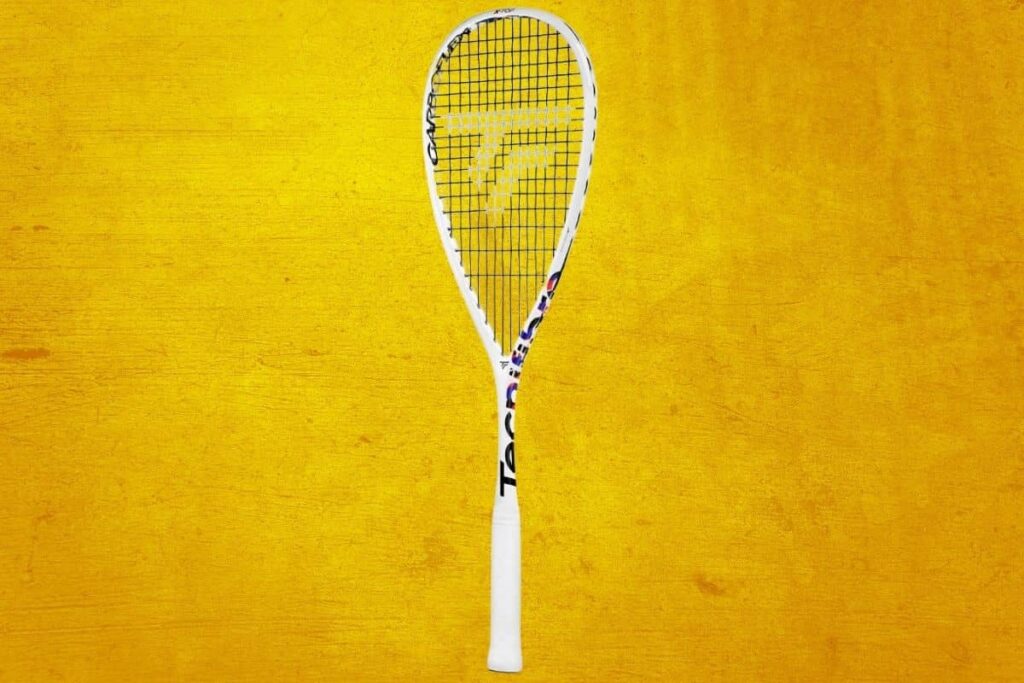
Key Specifications
| Specification | Details |
| Weight (unstrung) | 120 g |
| Head size | 500 cm² |
| Balance | 350 mm (head-light) |
| String pattern | 14 × 18 |
| Beam width | 16 mm (mid-profile) |
| Construction | Graphite frame with X-Arms carbon tendons, Aramid-fibre woven head section, PTFE coating |
| Grip size | 3 7/8″ |
Technology & Construction
The Carboflex X-Top V2 120 dispenses with a traditional bumper guard by weaving Aramid fibres directly into the graphite hoop and shaft, then applying a PTFE finish for unmatched abrasion resistance. Carbon X-Arms reinforce torsional stability along the frame, while the teardrop head shape and Extended String Holes at 3, 9 and 12 o’clock enlarge the sweet spot and boost string-bed elasticity for both power and forgiveness.
Performance Highlights
On court, this 120 g swingweight accelerates through serves and drives with minimal drag, delivering explosive pace while X-Arms stabilization locks the frame for rock-steady impact. The pronounced head-light balance empowers rapid volley exchanges, and integrated vibration damping tames off-centre hits, preserving pinpoint accuracy on tight drops and full-length retrievals alike.
On-Court Feel & String Recommendations
Players praise the Carboflex X-Top V2 120 for its crisp instant feedback on firm strokes and its forgiving touch on delicate drops. To sustain its lightning-fast swing speed and lively ball pocketing, string at 24–26 lb using a high-quality multifilament such as Tecnifibre Dynamix VP for comfort and power retention or choose a hybrid arrangement of polyester mains with synthetic-gut crosses to introduce extra spin without harshness. This tension window maintains the racket’s nimble essence while ensuring consistent dwell time and rebound.
Pros and Cons
| Pros | Cons |
| Ultra-light 120 g head for lightning-fast swings | Premium price point |
| Expanded sweet spot from teardrop head and Extended String Holes | Firmer feel on extremely delicate touch shots |
| Superior abrasion resistance via X-Top Aramid fibres | Less natural mass behind drives compared to heavier models |
Who Should Buy
The Carboflex X-Top V2 120 Graphite is perfect for advanced and tournament-calibre players who thrive on rapid-fire rallies and precision placement. If your arsenal relies on blistering serve speeds, tight volley exchanges and cutting-edge frame innovation, this racket will amplify both your shot velocity and control.
7. PRINCE 19 SQ Vortex Pro 650
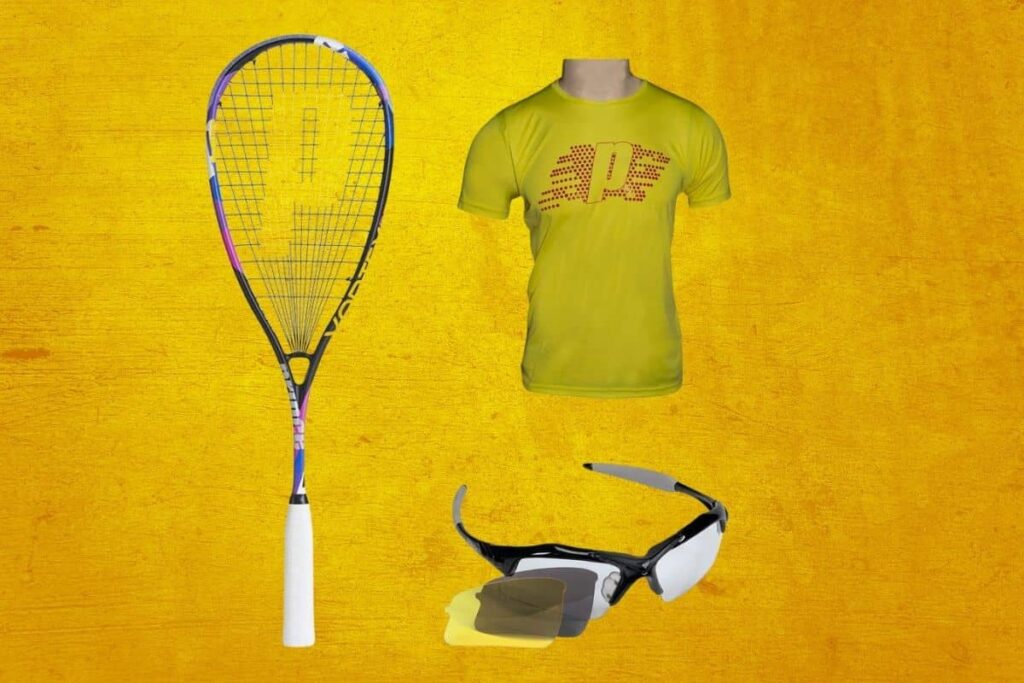
Key Specifications
| Specification | Details |
| Weight (unstrung) | 125 g |
| Head size | 75 sq in (≈484 cm²) |
| Balance | 330 mm (head-light) |
| Length | 686 mm |
| String pattern | 16 × 17 |
| Construction | Graphite/Twaron composite |
| Power level | 650 |
Technology & Construction
Prince integrates Twaron fibres into a high-modulus graphite frame for an optimal strength-to-weight ratio. Air Quadrants in the handle attenuate vibration and hand shock, while an inverted “ring” in the throat lengthens mains for more uniform string tension and consistent power across the bed. A grommetless throat design boosts frame durability and lateral stiffness, and the 27 in length coupled with the 75 sq in head maximizes both reach and sweet-spot size.
Performance Highlights
On court, the Vortex Pro 650 unleashes robust drives courtesy of its uniform string-bed dynamics and torsion-resistant throat. You’ll feel immediate ball response on serves and deep drives, with the 330 mm head-light bias letting you transition seamlessly into rapid volley exchanges. Shock-damping Air Quadrants preserve control on off-centre hits, helping tight drops and tight cross-courts stay true under pressure.
On-Court Feel & String Recommendations
Users report a crisp, lively feedback on power strokes and a forgiving touch on soft shots. To maintain the racket’s balanced pop and control, string at 24–26 lb. A high-quality multifilament such as Prince Syn Gut offers comfort and steady power, whereas a hybrid setup—polyester mains paired with synthetic-gut crosses—introduces added spin potential without sacrificing dwell time.
Pros and Cons
| Pros | Cons |
| Uniform power distribution from inverted-ring throat | Slightly firmer feel on ultra-delicate drop shots |
| Vibration reduction via Air Quadrants | Lacks the ultra-light swingweight of sub-120 g models |
| Durable, stiff grommetless design for consistent string-bed performance | No full-length cover included |
| Competitive price point for advanced-level composite frame |
Who Should Buy
The PRINCE 19 SQ Vortex Pro 650 is perfect for advanced and competitive players seeking a forgiving yet stable racket that blends power with precision. If your game features heavy drives, rapid volley exchanges, and you value consistent string response and shock control, this frame will elevate both your pace and placement.
8. Tecnifibre Slash 125
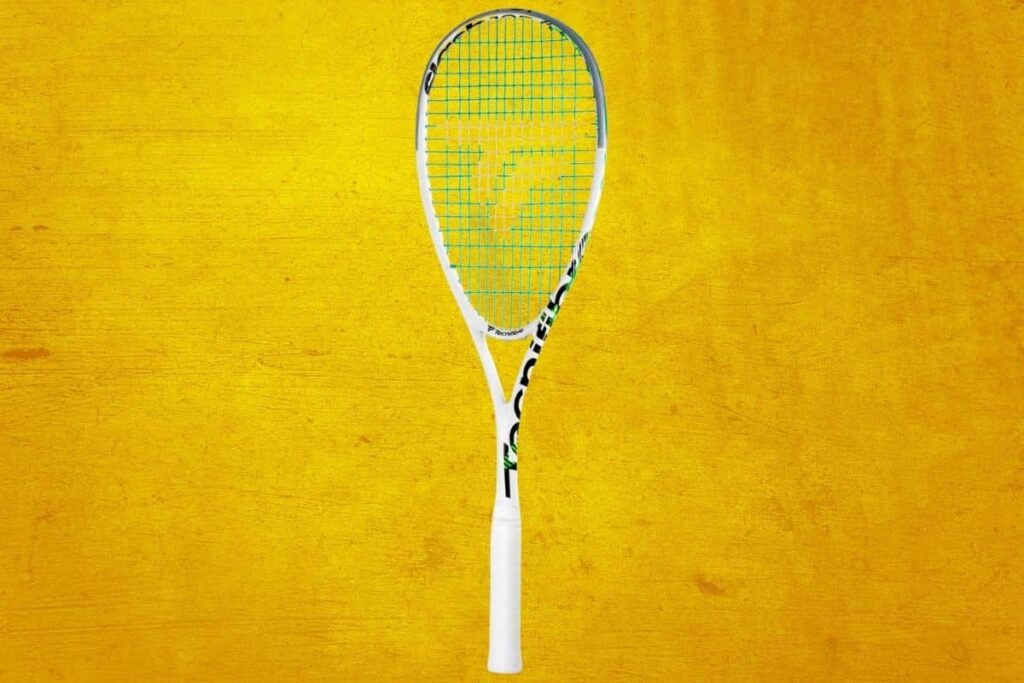
Key Specifications
| Specification | Details |
| Weight (unstrung) | 125 g |
| Head shape | Oval |
| Length | 695 mm |
| Beam width | 40 mm (max) |
| Material | Carbon-graphite composite frame |
Technology & Construction
The Slash 125 ditches a traditional bumper for X-TOP Revolution technology—active aramid fibres woven into the hoop and shaft and treated with PTFE for slide-proof abrasion resistance. Its open-core ergonomics reshape the head into a larger, longer oval, optimizing power transmission and expanding the sweet spot. YOKE Control Technology in the throat and oversize shaft mesh strength with stability, while the pre-strung Tecnifibre 305 Green multifilament ensures immediate playability and lively pop from the first swing.
Performance Highlights
On court, the ultra-light 125 g frame delivers crisp acceleration, letting you unleash powerful drives with minimal wind-up. The enlarged oval head translates to forgiving off-centre hits and a bouncier string bed without sacrificing precision. Its low-profile beam and balanced construction promote swift manoeuvrability in rapid volley exchanges, and the reinforced PTFE-treated frame shrug off abrasion on slides, preserving responsiveness throughout marathon rallies.
On-Court Feel & String Recommendations
Players describe the Slash 125 as offering instant, tactile feedback on firm strokes and a surprisingly plush response on delicate drops. To preserve its lightning-fast swing and lively pocketing, aim for a tension of 24–26 lb. A high-quality multifilament such as Tecnifibre 305 Green maintains comfort and power, while a hybrid setup—polyester mains paired with a synthetic-gut cross—adds bite and spin without deadening dwell time.
Pros and Cons
| Pros | Cons |
| Featherlight 125 g construction for rapid acceleration | No protective cover included |
| Expanded sweet spot from open-core oval head | Lacks the mass for bullet-like plow-through on heavy volleys |
| Durable PTFE-treated X-TOP frame resists abrasion | Firmer feel on very soft touch shots |
| Ready-to-play out of the box with 305 Green multifilament |
Who Should Buy
The Slash 125 is built for advanced attackers and shot-makers who prize blistering swing speed and a forgiving head shape. If your game thrives on explosive drives, precision drop plays and you demand cutting-edge abrasion resistance without added heft, this racket will empower both your power and control—right from the first point.
9. Dunlop Sonic CORE Evolution 120
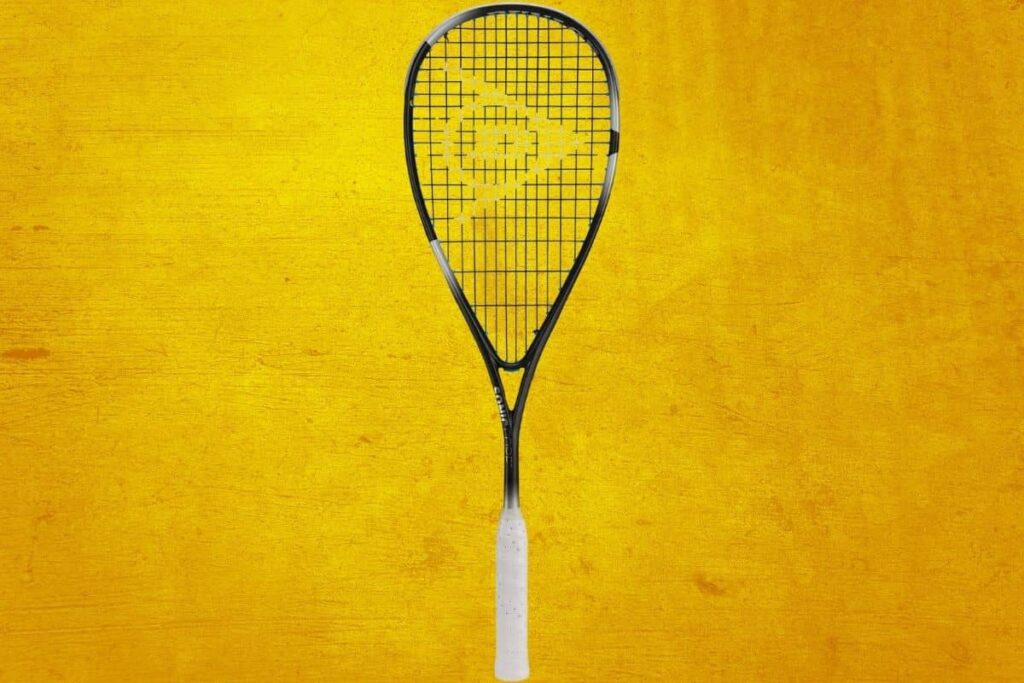
Key Specifications
| Specification | Details |
| Weight (unstrung) | 120 g |
| Head size | 490 cm² / 76 in² |
| Length | 686 mm / 27 in |
| String pattern | 14 × 18 |
| Frame material | Premium carbon fibre (graphite composite) |
| Shaft material | Carbon fibre |
Technology & Construction
This Evolution 120 harnesses Sonic Core technology by embedding Infinergy foam into a hybrid carbon frame, delivering explosive rebound and slashing vibration by up to 37 %. An aerodynamic, sharpened leading edge slices through air for swifter swings, while CX grommet polymer and micro-bead-infused Glide Polymer grommets boost stringbed movement and power potential. The 490 cm² head mated to a 27 in graphite shaft yields a head-light bias for razor-sharp control and stability.
Performance Highlights
On court, the Evolution 120 feels alive from serve to drop shot. The integrated foam core springs you out of the string bed with authority yet absorbs harsh feedback on off-centre strikes. Its aerodynamic beam and head-light swingweight let you dart through volleys without lag, while the generous sweet spot forgives hurried reaches and late-paced lobs.
On-Court Feel & String Recommendations
Players rave about the racket’s lively, spring-loaded response on firm blows and its appeasing damping on delicate returns. For best balance between speed and pocketing, aim for a string tension of 24–26 lb using a high-quality multifilament like Dunlop’s own synthetic gut or a hybrid setup pairing polyester mains with synthetic-gut crosses. This tension window sustains the Evolution 120’s nimble essence while ensuring consistent dwell time and spin potential.
Pros and Cons
| Pros | Cons |
| Explosive rebound and reduced vibration via Sonic Core/Infinergy foam | No cover included |
| Aerodynamic design for faster swing speed | Premium price relative to entry-level frames |
| CX grommet and Glide Polymer system enhance string movement | May feel too lively for players preferring heavier plow-through |
Who Should Buy
The Dunlop Sonic CORE Evolution 120 is built for advanced and tournament-level players who prioritize lightning-quick manoeuvrability, crisp feedback, and controlled power. If your game thrives on rapid volley exchanges, pinpoint drop shots and you demand cutting-edge vibration dampening, this racket will amplify both your comfort and shot precision.
10. Tecnifibre 12CAR125AS Squash Racket Carboflex 125 Airshaft
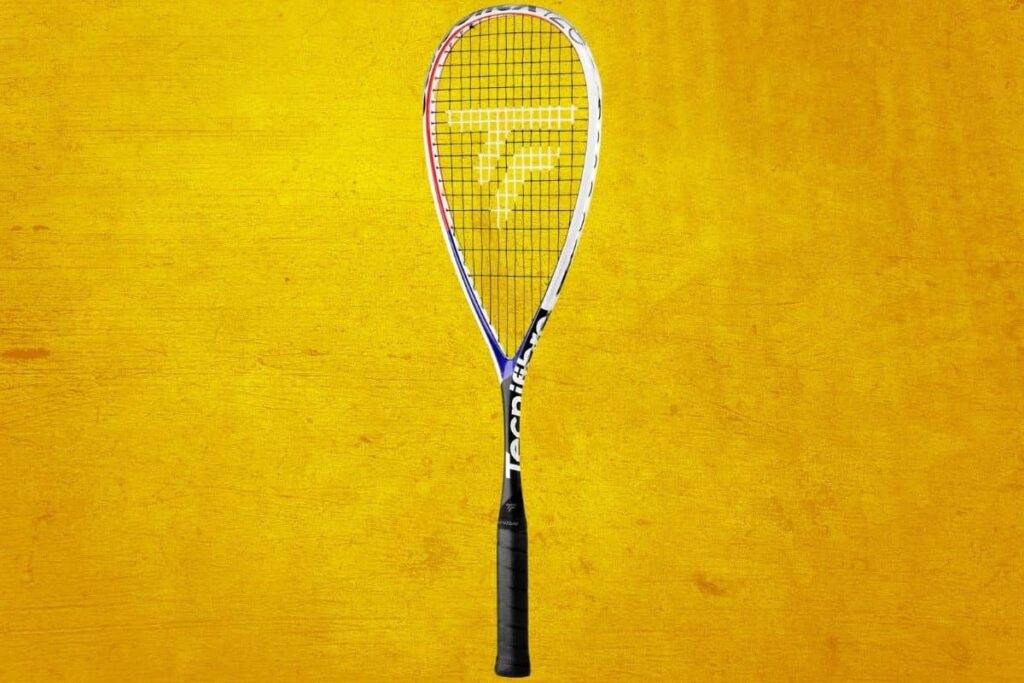
Key Specifications
| Specification | Details |
| Weight (unstrung) | 125 g |
| Construction | Graphite frame with AIRSHAFT technology, X-ARMS, Extended String Holes |
Technology & Construction
This Carboflex 125 Airshaft is built around AIRSHAFT technology, which embeds active aramid fibres into the graphite hoop and shaft for explosive rebound and lightning-fast racket acceleration. X-ARMS carbon tendons reinforce torsional stability along the beam, while Extended String Holes strategically enlarge the string-bed for improved ball pocketing and consistent power delivery.
Performance Highlights
On court, the 125 g unstrung swingweight feels lively through serves and drives, propelling the ball with minimal drag. Its head-light bias lets you transition seamlessly into rapid volley exchanges, while the fibre-damped frame tames vibration on off-centre hits to keep your accuracy locked in—even when you swing flat out.
On-Court Feel & String Recommendations
Players note crisp feedback on solid drives without the harsh sting on delicate drops. To preserve the racket’s liveliness and pocketing, string at 24–26 lb using a high-quality multifilament such as Tecnifibre 305 Green for comfort and power retention. For extra spin without sacrificing dwell time, consider a hybrid setup with polyester mains and synthetic-gut crosses.
Pros and Cons
| Pros | Cons |
| Ultra-light 125 g unstrung for lightning-fast swing speed | No protective cover included |
| AIRSHAFT and X-ARMS deliver explosive rebound and stable frame feel | Lacks the mass for heavy plow-through drives |
| Extended String Holes expand the sweet spot and ensure uniform string-bed response | Firmer feel on extremely delicate touch shots |
| Ready to play out of the box with premium factory string |
Who Should Buy
The Carboflex 125 Airshaft is perfect for advanced and competitive players who thrive on rapid-fire volleys, quick wrist turns and maximum acceleration. If your style demands blistering swing speed and precise control in every exchange, this racket will amplify both your pace and your pinpoint accuracy.
IV. Squash Racket Buying Guide

Choosing the right squash racket involves more than just picking the lightest frame or the flashiest design. Instead, you must consider how each specification influences your swing, shot accuracy, and overall comfort. Below, we break down every critical factor—you’ll gain the insight to select a racket that complements your style and elevates your game.
Weight and Balance
Weight Categories
- Ultra-light (≤ 115 g): Delivers blistering swing speeds but demands precise technique. Ideal for volley‐dominant players who prioritize reaction time.
- Light (116–125 g): Strikes a balance between speed and stability. Favoured by most intermediate players who need both power and manoeuvrability.
- Mid-weight (126–135 g): Offers extra plow‐through on drives, making it easier to generate pace. Suits players who rely on deep boasts and heavy drives.
- Heavy (> 135 g): Rare in modern rackets but can benefit novices needing added power on every shot. Manoeuvrability is the trade‐off.
Balance Types
- Head-light: Shifts mass toward the handle, accelerating your swing for quick volleys and short‐court exchanges.
- Even: Distributes weight uniformly, granting a versatile mix of power and control—perfect for all-court players.
- Head-heavy: Concentrates weight in the hoop for extra punch on drives and serves. Best for singles specialists who drive deep and hard.
Frame Materials and Technologies
Core Composites
Graphite and high-modulus carbon fibre form the backbone of modern rackets. They deliver excellent stiffness-to-weight ratios, so your shots unload power efficiently.
Nanomaterial Enhancements
- Graphene (e.g., HEAD rackets): Reinforces critical stress zones, improving energy transfer.
- TeXtreme® (Prince): Spreads stress across a wider weave, boosting torsional stability.
- Hyperfibre+ (Dunlop): Embeds nanofibers that dampen vibration and maintain frame integrity on mishits.
For a deeper dive into how these materials work and affect play, check out Squash Gear Reviews’ ultimate guide to buying a squash racket.
Head Size and Sweet Spot
- Smaller heads (≤ 470 cm²) yield pinpoint control but demand precision on impact.
- Larger heads (≥ 500 cm²) enlarge the sweet spot, forgiving off-centre hits and boosting power for beginners.
String Pattern and Tension
- Open pattern (14 × 18): Enhances ball bite and spin potential, ideal for players who like to cut and slice.
- Dense pattern (14 × 19): Stabilizes stringbed for surgical control and longevity.
Standard tension ranges:
- 24–26 lb for extra power and livelier feel
- 26–30 lb for tighter control and firmer feedback
Experiment with hybrids—polyester mains for durability and spin, multifilament crosses for comfort—to fine-tune launch speed and dwell time.
Grip Size and Comfort
Measure from your palm’s base to the tip of your ring finger to find the correct grip circumference. Then, choose between:
- Factory grips: Often tailored to pro preferences, may need buildup.
- Overgrips: Quick, inexpensive way to adjust tackiness and thickness.
- Vibration dampeners: Inserted beneath the grip, they reduce shock on each impact.
Matching Racket to Skill Level
- Beginner: Prioritize durability, forgiving sweet spot, and moderate weight to ease stroke development.
- Intermediate: Seek a balanced frame that gradually introduces advanced technologies—look for mid-range models (120–130 g, RA 72–75 stiffness).
- Advanced: Narrow your choice to specialized rackets that emphasize either rapid head speed (ultra-light, head-light) or maximum power (mid-weight, head-heavy), supplemented by high-tech composites.
By systematically evaluating these factors—and leaning on expert resources—you’ll confidently select a squash racket that aligns with your biomechanics, tactics, and long-term performance goals.
V. Maintenance & Care Tips

Regular maintenance not only preserves performance but also extends the life of your squash racket. By adopting proactive care routines, you avoid costly replacements and ensure consistent playability. The following tips cover every aspect of racket upkeep, from cleaning to storage.
First, inspect your racket’s frame weekly. Look for hairline cracks or warping along the hoop and throat. Even minor damage can worsen under impact, so address cracks immediately—consider adding protective bumper tape or consulting a professional for repairs. Likewise, check grommets for wear; replacing a single damaged grommet can prevent string breakage and frame deformation.
Next, monitor your strings with care and restring appropriately. Strings lose tension over time, which alters your racket’s feel and reduces shot accuracy. If you play more than twice weekly, aim to restring three times per year. For detailed restringing schedules and techniques, see Serve & Smash’s comprehensive durability guide.
Grip maintenance also influences control and comfort. Replace your overgrip every one to two months, or sooner if you notice significant wear or loss of tackiness. Clean the underlying grip with a damp cloth to remove sweat and dirt, then apply a fresh overgrip, ensuring no gaps or wrinkles.
Proper storage safeguards your racket against environmental damage. Avoid leaving it in a hot car or damp locker; instead, store it in a well-ventilated, temperature-controlled racket bag. During extended breaks, slightly loosen strings or remove the racket to relieve tension on the frame.
Finally, clean your racket regularly:
- Use a soft brush or cloth to remove dust and ball marks from the frame.
- Wipe strings with a damp cloth to eradicate sweat residue, which can degrade string fibres.
- Sanitize grips with alcohol wipes to prevent bacteria buildup, especially if you share equipment.
By following these thorough maintenance and care practices—and consulting expert resources like Serve & Smash’s durability guide—you’ll keep your squash racket performing at its best for seasons to come.
VI. Final Thoughts and Next Steps

By now, you’ve explored the strengths and trade-offs of the top 10 squash rackets on today’s market. Use our comparison table and buying guide to narrow down options that suit your playing style, skill level, and budget. Then, test your favourites to discover the racket that truly elevates your performance on the court.
VII. Frequently Asked Questions
1. How often should I restring my squash racket?
Maintaining proper string tension is crucial for consistent power, control, and feel. Over time, strings lose elasticity, leading to reduced ball “pop” and unpredictable response. As a general guideline, restring as many times per year as you play per week—so if you play three times weekly, plan three restring sessions annually. Competitive or high-intensity players often restring every 6–8 weeks. Look for indications like frayed strings, tension loss immediately after play, or a dull hitting feel. For a complete walkthrough on choosing string type, tension settings, and DIY techniques, see Squash Point’s guide on stringing your racket.
2. What grip size works best for smaller hands?
A correct grip size prevents slippage, reduces wrist and forearm strain, and enhances shot precision. To measure, hold your dominant hand palm-up and use a ruler to gauge the distance from the base of your palm (where your wrist creases) to the tip of your ring finger. That measurement in inches equals your ideal grip circumference. Many players with smaller hands fall between 4″ and 4¼”. If you land between sizes, apply an overgrip to build thickness and customize feel. For more detailed sizing charts, material comparisons, and installation tips, check out My-Squash’s Squash Grip Buying Guide.
3. Can I use the same racket for both singles and doubles?
Yes, but adjusting racket specifications can optimize your performance in each format:
- Singles often require deeper drives and powerful boasts. A mid-weight to head-heavy racket (125–135 g) adds momentum behind those shots.
- Doubles emphasize rapid volley exchanges and quick reflexes at the T-line. Head-light, ultra-light rackets (110–120 g) facilitate lightning-fast swings and tight net play.
- For players alternating formats, an evenly balanced racket (120–125 g) with an open string pattern delivers a versatile blend of power, control, and manoeuvrability.
Experimenting with these setups ensures you extract maximum performance whether you’re grinding in singles rallies or darting around the doubles court.
4. Is a more expensive racket always better?
Not necessarily. Racket pricing reflects materials, technology, and brand positioning, but the “best” racket aligns with your playing style and skill level:
- Beginner to intermediate players often benefit more from mid-range rackets ($100–$150) that offer forgiving sweet spots, balanced performance, and durability.
- Advanced competitors who’ve refined their swing mechanics may leverage specialized technologies—Graphene, TeXtreme, Hyperfibre+—and invest $200+ to fine-tune power, control, or head speed.
- Technique always trumps tech: a high-end racket underutilized by imperfect strokes yields less improvement than a well-matched, mid-tier frame executed flawlessly.
Ultimately, match racket choice to your biomechanics, tactical preferences, and budget rather than price alone.

